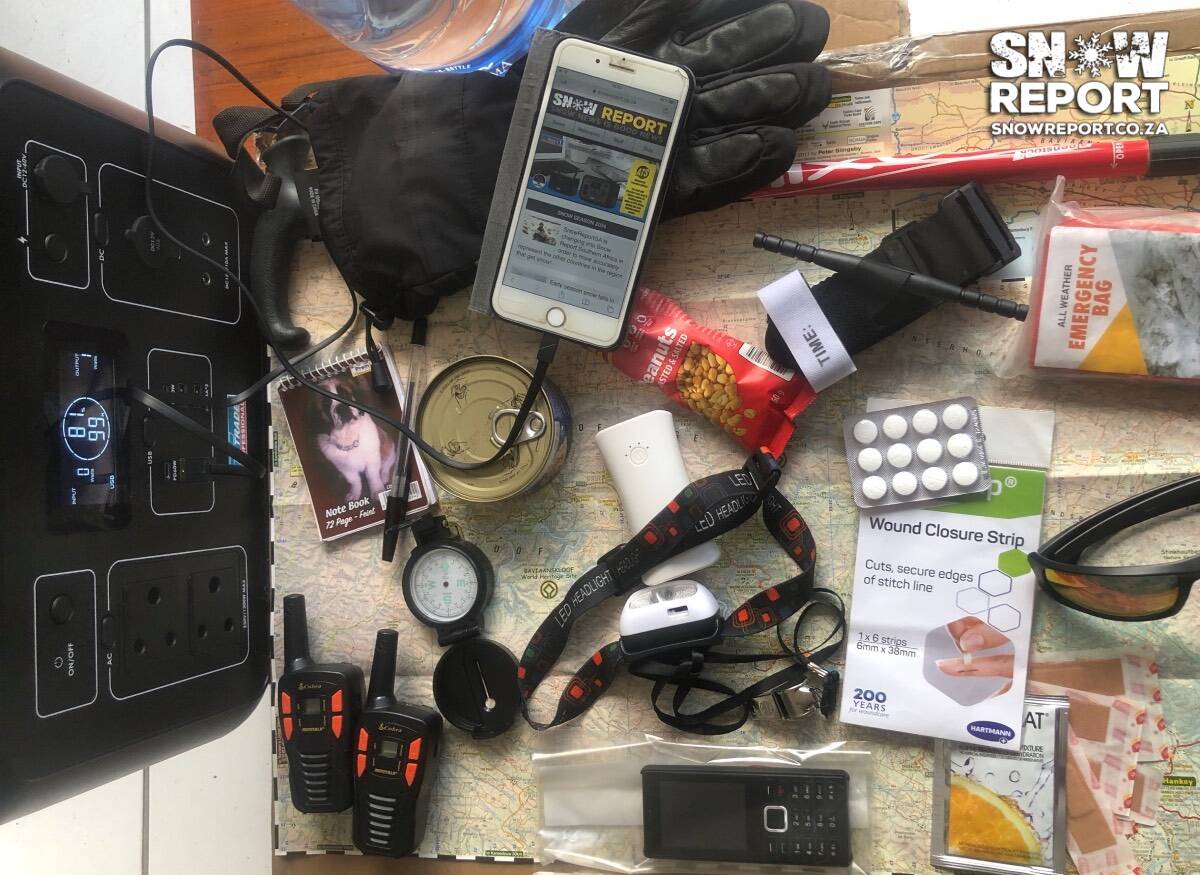 Be prepared for safe winter travel and snow chasing trips6 July 2024By The Editor
The author of this article is an experienced extreme weather hiker, camper, climber and former first responder with rescue training and experience in North America. With heavy low-level snow forecast for Sunday and Monday and gale force winds to go with it, safety is something that needs to be taken very seriously for those planning a snow chasing adventure. Despite plenty of relevant experience, the author of this article has found himself lost in the mountains after climbing a koppie to check for snow after the clouds closed in around him. The trail was not marked and it took two hours to get back to the car, which was five minutes away (we might run an article about this sometime as it is an interesting story). We've been asked about camping during this snow event, and I would strongly recommend against it unless you're experienced with alpine mountaineering due to the 100 km/h winds that will make for deadly conditions if your tent can't withstand the conditions. The wind chill could result in an effective temperature of -25°C or colder if you're at higher elevations, which could be deadly if you find yourself without shelter (and digging a snow cave is not a realistic option). Even hiking into the mountains will be dangerous this Sunday because of the extremely strong wind, even if you're used to hiking in snow or bad weather. Monday is a far better day to hike up into the mountains on established trails but even then you should be well prepared for the conditions. Note that freezing wet conditions are almost always more dangerous than actual snow, especially if there is a strong wind. What we keep in the vehicle on a snow chasing trip: • rain gear and dry clothes, including socks and shoes. If you get stuck in your vehicle in freezing conditions you can get hypothermia in wet clothing quickly. An emergency poncho is a cheap and can fit in your pocket • lots of food and water for at least two days. The body burns a lot of energy in the cold you get confused and make bad decisions when cold and hungry. • first aid kit including a electrolyte replacement options, and make sure you know how to use everything in your kit • a 220V portable power supply for charging phones and laptops since batteries run down VERY quickly if the temperature is below freezing. • two way radios, especially if traveling with more than one vehicle • mylar emergency blankets or bags • torches and headlamps • a compass and a whistle • a notepad and pen, or preferably a pencil • zip lock bags for your phone, battery charger etc • toilet paper (white gold) • a shovel to dig your car out • jumper cables • hiking poles Before leaving on your trip Tell someone what route you are taking and let them know when you arrive. Makes sure they have a photo of your vehicle and your number plate. The same goes for hiking up to the snow. Leave a note on your car. Makes sure you have the local emergency numbers. If you're in a snow area you can contact us and we will do our best to help but be aware that many of the areas that get low-level snow have little or no reception. Check a map before you go so that you know the direction of the roads if you're taking remote roads. Preferably keep a printed map with you as your phone might right out of charge, especially if it's cold and even within minutes if there is a strong icy wind. If you are struggling to drive in deep slippery snow you can let some air out of your tyres to improve traction, but be careful of frostbite if there is a strong wind. Check your wiper blades. Check your spare tyre and make sure you have a jack. But if you're just heading to a popular low-level snow area, drive carefully! Snow makes tarred roads especially slippery and once the sun goes down or if it's really windy there might be ice on the road. If you're driving on a road with people playing in the snow the chances of a child running into the road during a snowball fight are very good and your brakes will not be effective on a slippery road. Please be sure to send photos and videos to us via whatsapp and also tell us where and when they were taken. See below for a link to our whatsapp channel but since the link does not work in the instagram app you will need to send us a whatsapp message and we'll send you a link. Follow our channels
Standard users are welcome to use the standard sharing buttons on this page to share our content. It is NOT acceptable to download or screen grab for reposting. Other media and channels need to send us a request in order to embed or use of our forecasts, maps, as well as images and video from our users that we post (before doing so).
Our snow and roadtrip survival kit
 |
